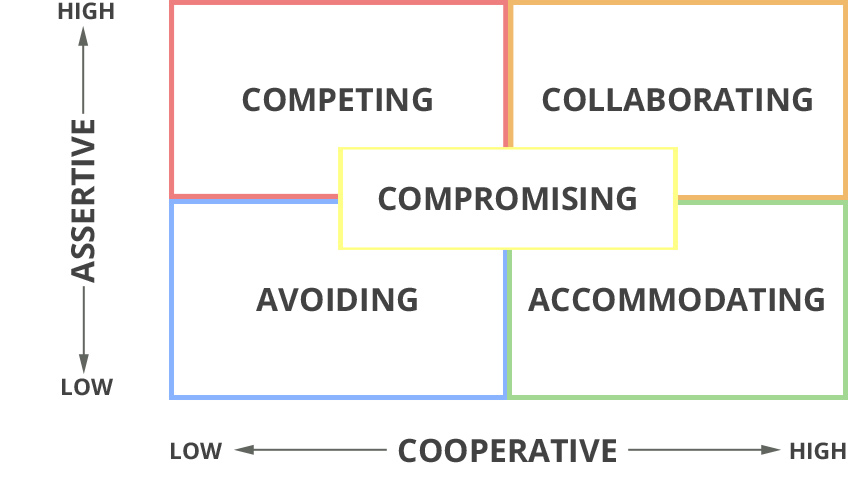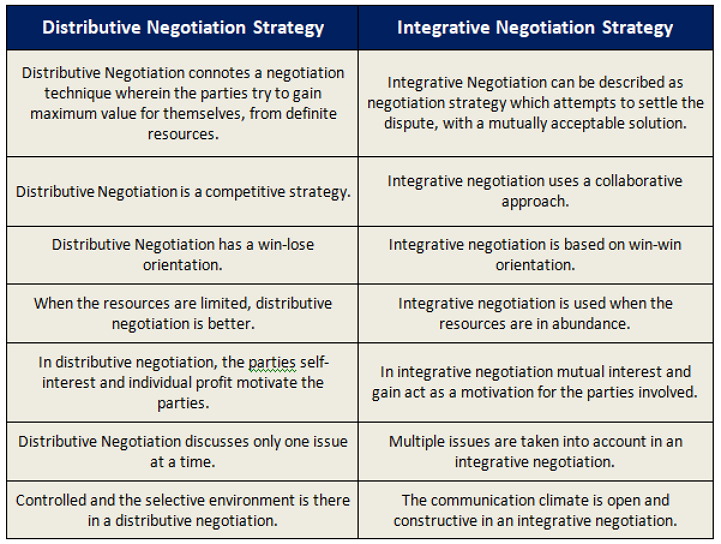Case Study Background:
Kay, the finance manager at a large company faces a dilemma. Robert, who is one of the Accounts Directors and a union member, has requested an 8 percent raise for his work unit. His request is based on recent finance reports showing that his department has substantially contributed to a 15 percent profit increase for the organisation. He feels that his team should be compensated for the hard work and long hours they have put in over the last few years to achieve this outcome.
Kay knows the value of Robert’s team and readily acknowledges their achievements. However, she knows that the company has plans to expand and diversify. This new project will use up the majority of the profit increase for at least the next five years. She is willing to sit down with Robert and talk about how his team can get involved in the new project. There could be new job opportunities, some overseas assignments, and possible promotions to various leadership positions within the new project. Kay has flagged this with Robert; however, he is adamant that his team needs to be compensated with a monetary increase. He went as far as threatening to get the union involved if his request is unsuccessful.
Conflict handling styles used in this case study:

(Source: https://www.projectmanagementqualification.com/blog/wp-content/uploads/2019/04/xconflict-management.jpg.pagespeed.ic.56DMQ5uT8l.jpg)
Before determining the conflict handling styles in this scenario, it is important to first explain what the different handling styles are, what they do, and what results they achieve:
Avoiding
The avoiding handling style completely evades the conflict. This style breaks off communication of the matter entirely, which results in a lose-lose situation for both sides of the matter, simply because there is no avenue to communicate about the conflict at hand. An example would be if a person keeps avoiding his friend that he recently had an argument with. Instead of addressing the issue and possibly bringing it to a close, this person avoids, and thus neither he nor his friend will have a chance to close the issue.

Accommodating
Accommodating style occurs usually when one party puts down their own desires and goals in favor of the other party. Essentially, they are putting themselves up for loss so that the other party will win in this conflict. While giving in and losing does not seem to be something that many would readily do, it can be driven by ulterior motives, such as valuing the other party’s relationship, being persuaded with other incentives, or just simply giving in to end the conflict. This style, unfortunately, is likely to be taken advantage of, and can easily build resentment within the accommodating party. An example would be for a boss to give in to his top employee’s demand for a raise even if it is not in his company’s interests since that would cut off funds that could be used for managing company assets better. He accommodates his employee and ‘loses’ this conflict as he treasures his employee’s contributions more than the raise money he has to give.

Competing
The competing style is where one party is only concerned about their own benefits and desires, and they tend to be assertive and uncooperative. This style is shown when the party refuses to see the perspective of others, and simply wishes to push for their objectives, even at the expense of others’ goals and desires. Usually, this occurs when the party in question cares more for the outcome of the matter than anything else (relationships, for example), and it is the perfect way to garner resentment towards the party itself. An example would be of a new CEO who demands his employees to change their working style and process to his liking, without considering the initial culture, or even the relationships when he only wishes to see the change above anything else. Simply wishing to get the task done like this is more than likely to cause resentment and unhappiness in his employees against him.

(Source: https://joelllchoy.wordpress.com/wp-content/uploads/2020/07/b24d0-slave_driver-1.jpg)
Compromising
The compromising conflict handling style works to find a middle ground between the conflicting parties. While it does not necessarily mean that both parties win, it at least gives a partial degree of benefit to both sides. A compromising style, however, can still generate resentment, as the desires or goals of both parties are not completely met and satisfied. Usually, this style is called on when the situation needs to be settled urgently, but it could lead to different outcomes of losing and winning depending on how the conflict is settled after this temporary fix. An example would be when two people are arguing over having a cake. Compromising would give them both half of it, which partially satisfies them even though they are not happy that they do not get the full thing that they desire. It could cause them to resent each other, or they may be satisfied adequately.
Collaborating
The collaborating style works by finding a way, more than just the middle ground, to meet the needs of all parties involved in the conflict. It satisfies everyone, and leads to a win-win situation that does not leave anyone unsatisfied. For collaborating to be achieved, parties must set down their goals and communicate with each other clearly, but the result that comes from that is ultimately the most desired way to handle the conflict. An example would be for two people to come to a clear agreement on what they want a cake for. If one just wants it for a good Instagram post, and the other wants to eat it, they can settle their argument and get what they both want.

Identify one of the conflict handling styles in this scenario
In this scenario, the conflict handling style of Robert can be identified as competing. This is because it is shown that Robert wants to have his goal of having his team compensated with a monetary increase ONLY. While Kay is willing to collaborate or compromise to compensate his team in other ways, Robert is adamant that his way of compensation is the only way that he is going to accept. He does not care for the company’s plans even though Kay had explicitly flagged it out to him, and he is even willing to go so far as to use his power as a union member to bring the union into this matter just so that his desired goal is met. All these characteristics follow the description of a competing style so closely that it cannot be denied that Robert has used this conflict handling style to address the issue in this scenario. Simply put, Robert sets himself up to win, and does not care whether Kay or the company loses out as a result.
Bargaining Approach in this scenario
There are two strategies for bargaining approach, either integrative or distributive. Below is a table that essentially shows how each approach works.

(Source: https://www.vskills.in/certification/tutorial/wp-content/uploads/2019/03/Strategies-for-Negotiation-2.png)
From the scenario of Robert and Kay, it can be determined that Robert uses a distributive approach when bargaining with Kay. As the distributive approach holds self-interest at heart, aims for getting maximum profit for themselves and has a win-lose orientation, it holds many characteristics that describes Robert’s earlier mentioned competing style. The scenario paints out that Robert only cares for the benefiting of his own team and not the other parties involved, and he does not try to work to make this conflict a win-win situation. He stirs up conflict, as he wants to benefit his team at the expense of the company, and does not care to make things even for the other side. It is clear that Robert takes on a distributive approach, and does not even try to have a more integrative approach despite Kay’s efforts to reach a ground that benefits both sides.
What aspect of interpersonal communication is contributing to the poor working environment? How is this demonstrated in the case?
An aspect that contributes to the poor working environment would be active listening, or more accurately, the lack of it on Robert’s end. Even though Kay showed the right way to listen to Robert’s demands and think about it before offering a middle ground, Robert was totally unreceptive to what she had to say. His adamant behavior meant that he was not going to accept any other viewpoint but his own, and he did not give any of her suggestions his attention. By being so closed to others’ opinions, Robert has made himself to be a poor listener, and as a result, the resentment of others towards him will only build when they realize that he is not interested in what they have to say. The resentment of others and the hostile behavior from Robert to not listen to others will only continue to contribute to the deterioration of the working environment.
Use Hall’s context model to describe one of the characters’ behavior
Before describing the behavior of one of the characters, Hall’s context model must be properly defined here as follows:

(Source: https://i.pinimg.com/originals/e8/f5/ec/e8f5ec4c39dc627cbfe710e89e39accb.jpg)
From the above table, it can also be seen that Robert’s behavior is more accurately described as low-context. The way that Robert threatened to involve the union if he did not get his way shows that he puts more priority on the task of getting his team monetary compensation more than the relationship he has with Kay and the company. Moreover, his demands and actions are clear and explicit. He does not try to beat around the bush and hint that he feels that his team deserves monetary compensation; He demands it clearly, and seeks nothing else but to have that demand met. Even his threats to bring the union in is blunt and clear. Seeing his low commitment to relationships and the clear explicit manner of his messages, it is plain to see that Robert’s behavior should be described as low context.
References
https://blog.hubspot.com/service/conflict-management-styles (conflict management styles)
https://www.waldenu.edu/connect/newsroom/walden-news/2017/0530-whats-your-conflict-management-style (what’s your conflict management style)
https://smallbusiness.chron.com/differences-between-distributive-bargaining-integrative-bargaining-11582.html#:~:text=Distributive%20bargaining%20is%20often%20filled,compromise%20to%20achieve%20a%20consensus. (Differences Between Distributive Bargaining & Integrative Bargaining)
https://virtualspeech.com/blog/interpersonal-communication-skills (Key Interpersonal Communication Skills you need to Improve)
Hello Joel! This is my first time reading your blog, I liked the way you have presented your blog with simple and detailed explanation of the analysis. It was pleasantly surprising to see that we do have similar views on the given four questions. I agree completely with your answers to the context of the case analysis. It is interesting to see your view on the analysis. Robert is identified to be using competing method to handle the conflict. His way of negotiation with Kay really create a uncomfortable situation to work along. It is really informative that you have included the differentiation between distribution and integrative negotiation strategy. I enjoyed reading through your blog. Overall your post has been informative and easy to understand as a reader.
LikeLike
Hi Joel , I love how your blog post being as simple, informative and detailed in the explanation of the analysis. The styles of conflict handling is good as well as you have provided an example of each conflict style handling. I totally agree with your answers to the context case by using the hall context model to describe on the behavior regarding Robert and how Robert use the competing method to handle the conflict with Kay which had created an uncomfortable situation to work with. I would like to suggest that when you have included the differentiation between distribution and integrative negotiation strategy, you might need to separate them into sections on both Kay and Robert to see how they use on distribution and integrative negotiation strategy. Overall, your blog is really interesting and super informative to understand.
LikeLike
Hello Joel, I am Zhao Dong, I have read some of your previous blog posts and I am still impressed by your work.
First of all, this blog post is so informative as it explains multiple concepts in detail based on each questions of the case study. The effort to summarise different concepts is highly appreciated, it makes my understanding on them clearer.
The answers provided are supported by enough evidences and thinking process, it has some different opinions with my own blog post, but I am amazed by the evidences you provided. It makes me revise my own blog post in a different perspective.
Thank you for your nice blog posts in the previous weeks, I enjoyed reading them. 😁
LikeLike
Hi Joel. Your post is detailed, giving definitions, explanations and examples for the various sections and how it links to the case study. I have the same view as you for the various questions, and it is interesting to see your analysis for each of them. I agree that Robert uses a distributive approach. He only wants to get the monetary increment for him and his team, even to the extent that it could cause a conflict and hurt the relationship that he and Kay have. Despite Kay’s effort to work things out with him, he is not interested in anything else other than achieving the end goal.
LikeLike